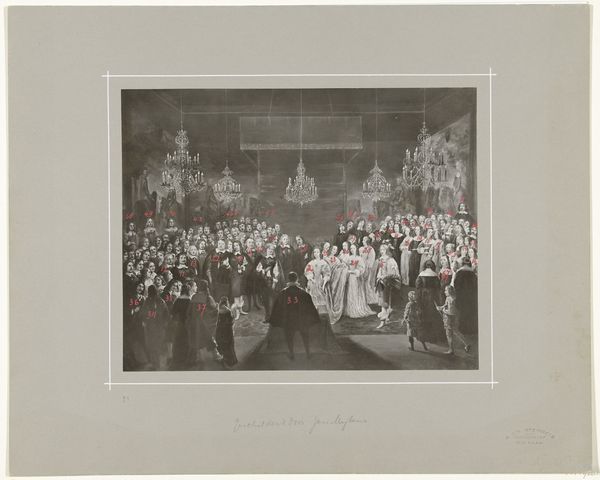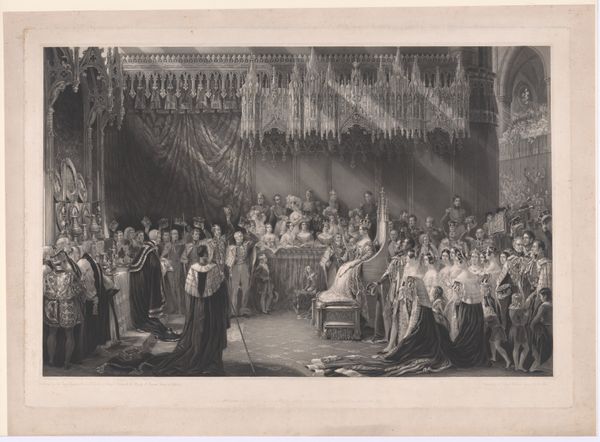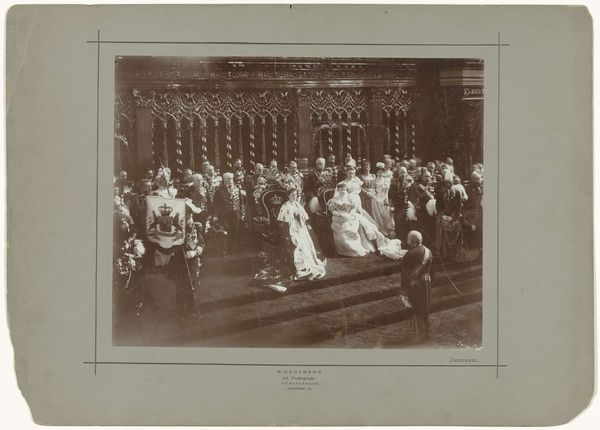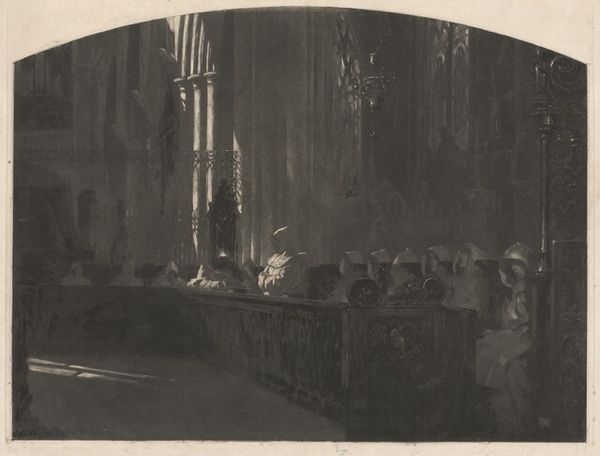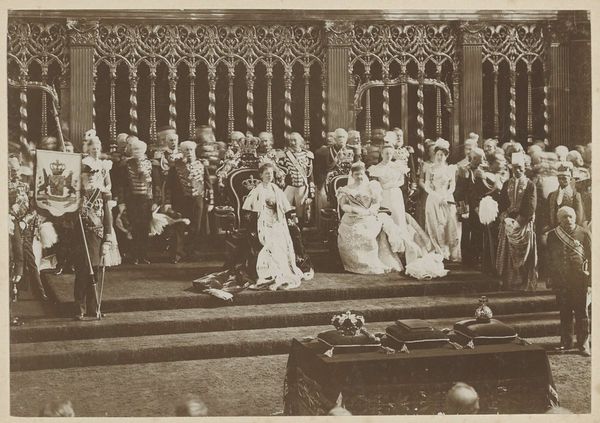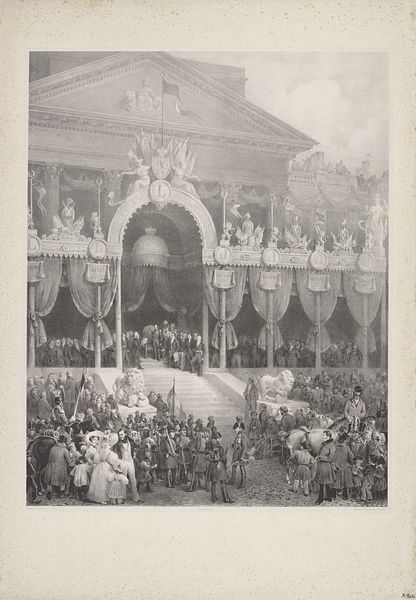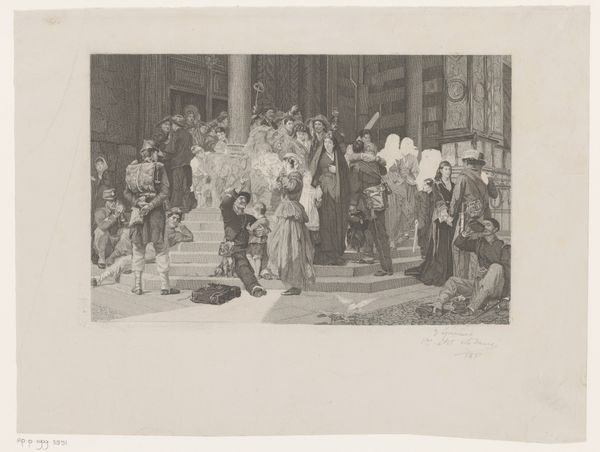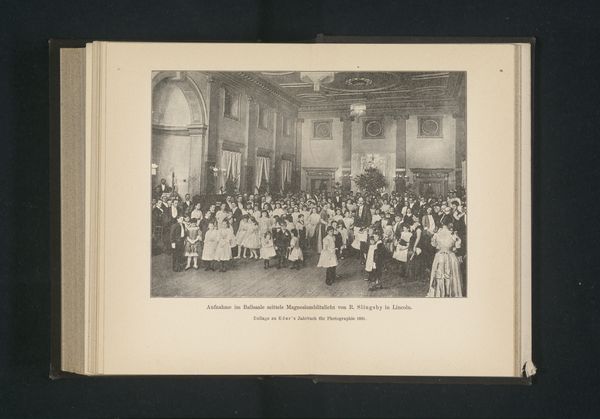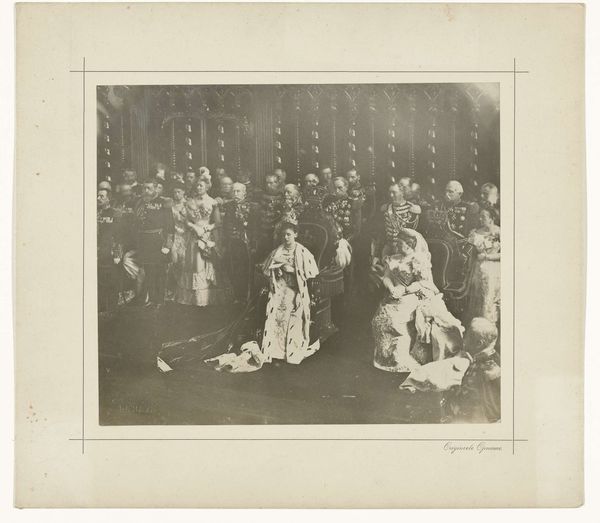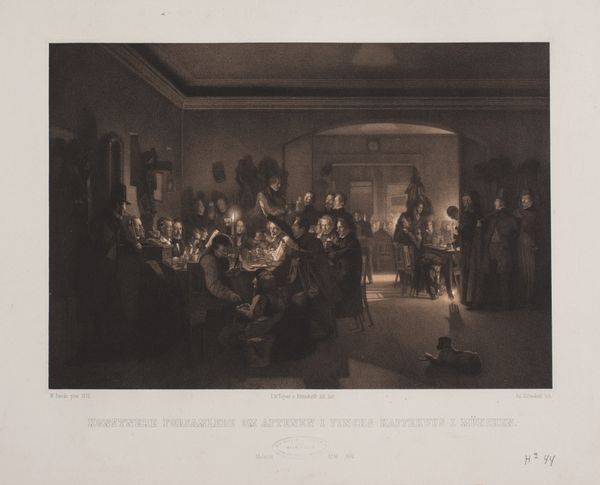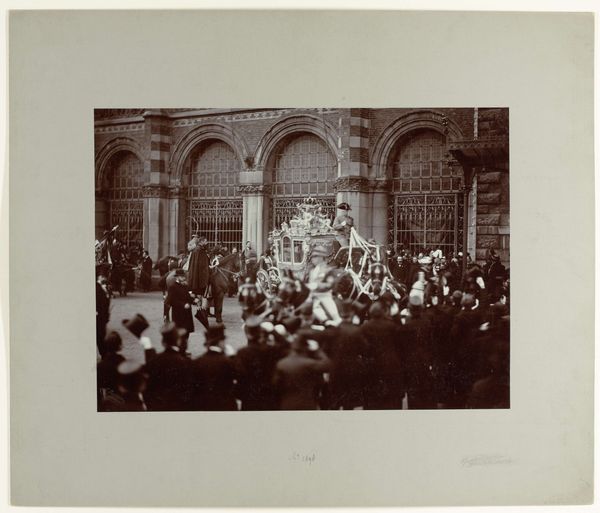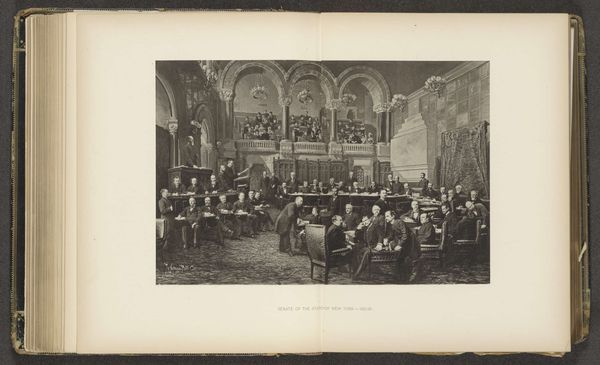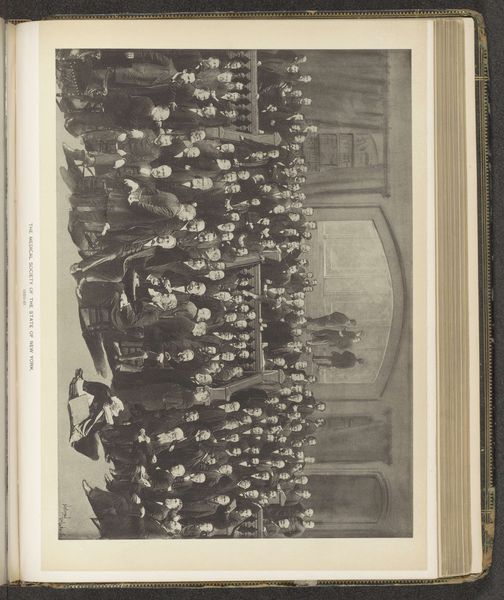
Plechtige Inzegening van het huwelijk van Koningin Wilhelmina der Nederlanden en hertog Hendrik van Mecklenburg te 's-Gravenhage, op 7 Februari 1901 1901
0:00
0:00
print, etching, photography
#
portrait
#
print photography
#
wedding photograph
# print
#
wedding photography
#
etching
#
photography
#
historical photography
#
history-painting
Dimensions: height 630 mm, width 894 mm
Copyright: Rijks Museum: Open Domain
Curator: At first glance, it feels like stepping back into a bygone era. There's an almost overwhelming formality and gravity in the scene. Editor: Indeed. What we're seeing here is "The Solemn Blessing of the Marriage of Queen Wilhelmina of the Netherlands and Duke Henry of Mecklenburg in The Hague, on February 7, 1901", captured in an etching and photography print by L. Angerer. Curator: The choice of monochrome really accentuates the ritualistic elements. The contrast between the light dresses and dark suits lends an almost symbolic weight, doesn’t it? Editor: Precisely. Wilhelmina, in her youth and almost luminous white gown, becomes an emblem of hope and the future for the nation, juxtaposed against the older, more established figures clad in darker hues. The image really plays on the concept of continuity and tradition. Notice the profusion of figures, practically a sea of faces; wedding, here, as a very public event. Curator: It speaks volumes about the sociopolitical role of monarchy at the turn of the century. These occasions weren't just personal milestones but rather performances of power and national unity, heavily influenced by the evolving relationship of crown and popular culture in a constitutional setting. Editor: And if we delve deeper, wedding iconography is fascinating! It's all about fertility, legacy, the continuation of the bloodline... symbols deeply entrenched in cultural consciousness across different periods and geographies. Look at the elaborate flower arrangements: blooms are practically breathing, which underlines the vivacity that monarchy tries to conjure through dynastic succession. Curator: Do you think the fact that this momentous occasion was captured in print allows for greater accessibility and thus a greater emphasis on public sentiment surrounding the monarchy? Perhaps something the Palace intentionally aimed for? Editor: I think so. Reproduction techniques inherently democratize access. Angerer's rendering creates a shareable emblem of national identity: not just for the elite who witnessed the wedding, but accessible to broader society through circulation, which, in turn, impacts collective memory surrounding it. It solidified the wedding not just as a private union but as a collective moment of shared national pride. Curator: So, we see in this print more than just a record; we see the forging of national identity, intertwined with the symbolic weight of monarchy. Editor: Yes, and perhaps, now, more as an artifact offering us clues about how these national values evolved through visual representation.
Comments
No comments
Be the first to comment and join the conversation on the ultimate creative platform.
